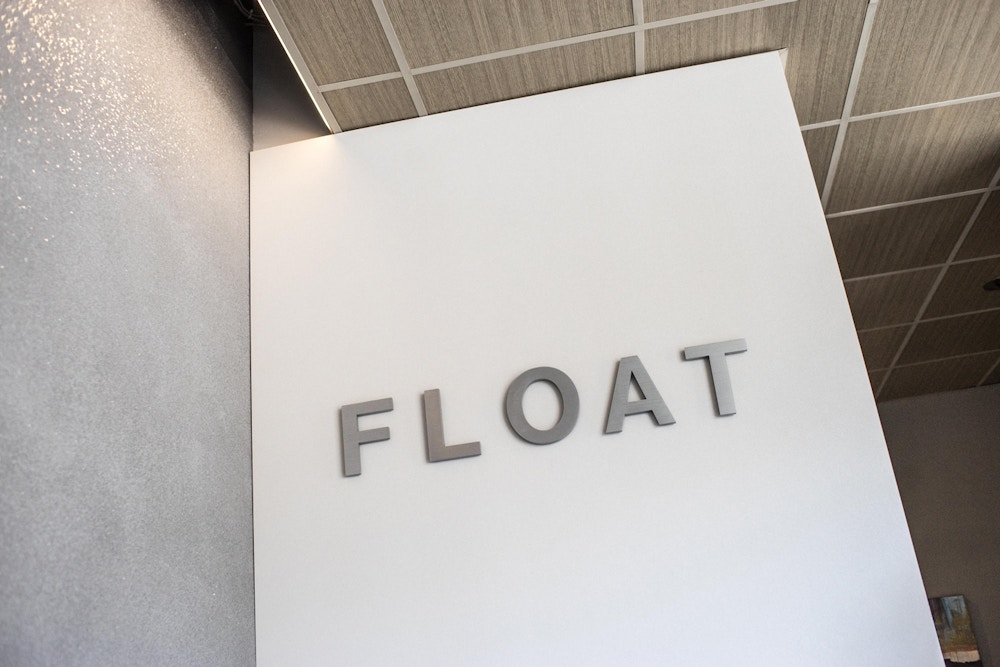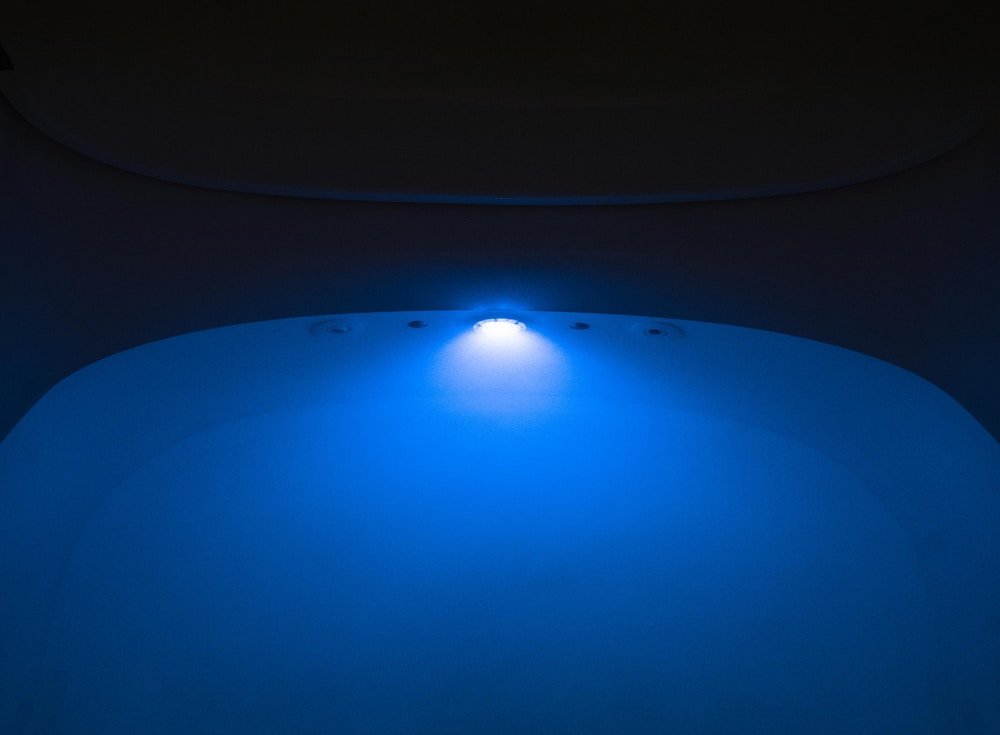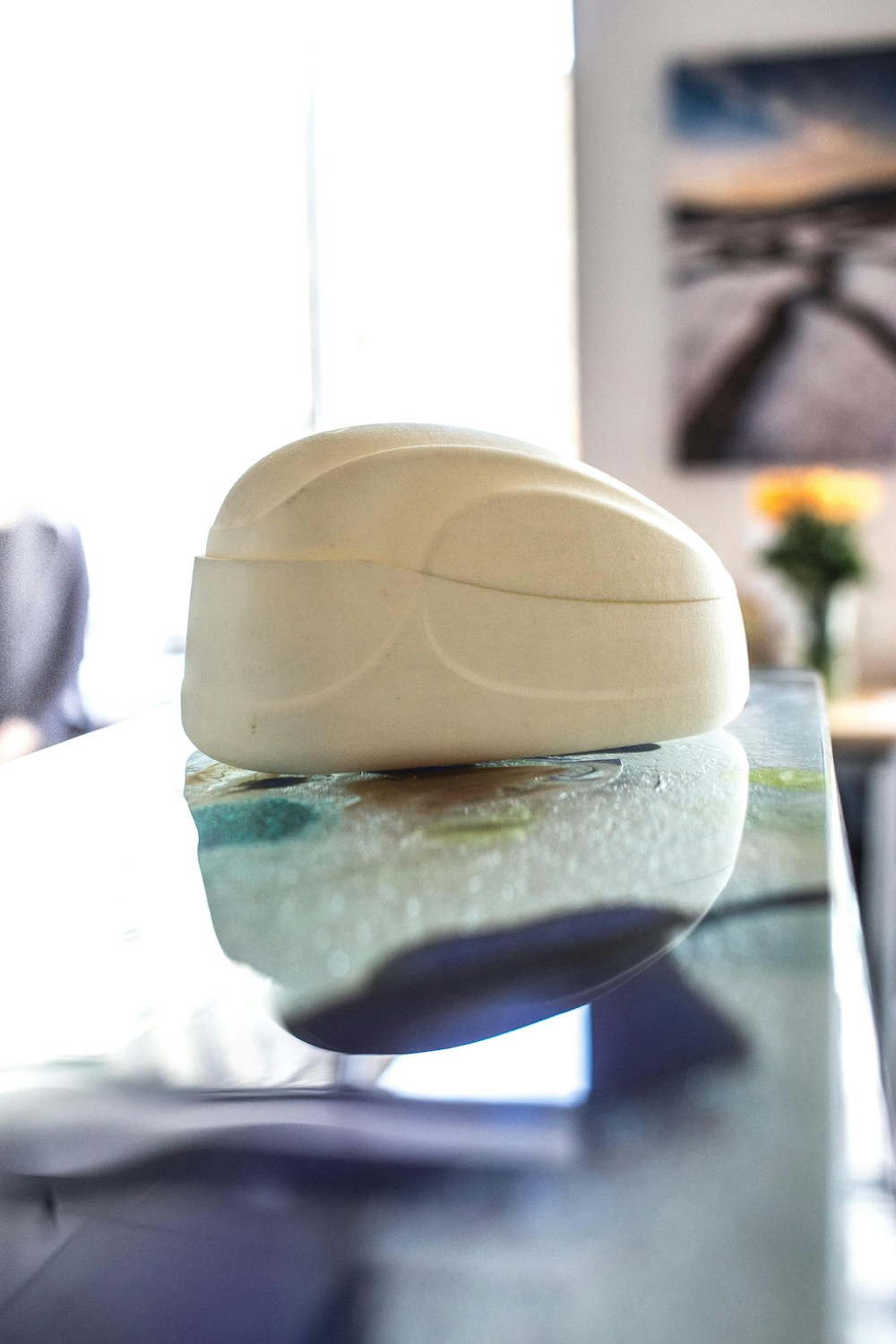Mar. 23, 2018
•3 min read
It’s sticky. Not like children’s hands sticky. The salinity in the water clings to your skin, coating you how ice cream coats your tongue with each unctuous dairy filled mouthful. Add some soft blue lighting and spa music and you’ve got a float tank. This is the setup at Milwaukee’s first float center, Float Milwaukee where you can go to play around with your mind.
From the minute you enter the door, Float Milwaukee is an experience. The stark entryway foreshadows the next 60 odd minutes of your day where everything will be stripped away, clothing included, so you can sit with yourself for possibly the first time all week, month, year. It feels like a luxury to be allowed to sit in relative quiet, sans smartphones, cars, computers, noise, even light if you so choose. Float Milwaukee gives you permission to be with yourself, something I think this generation increasingly shies away from. We are constantly inundated with noise, with interaction, with expectations of who and what we are supposed to be. One can hardly argue a Netflix binge is quality time spent with the self.
It can be uncomfortable at first, to sit with yourself and all the feelings affixed to your mind. It’s surprising what comes into your consciousness when everything is stripped away. The mind is like a classroom full of five year olds: cacophonous, incessant, rowdy. It doesn’t play by the rules and in some ways floating feels like the mental equivalent of a half marathon (a full marathon would be the overnight stays you can do).
I sat down with Andy Larson, the owner of Float Milwaukee, to learn what in the world provoked him to open a float facility and I found out the art of floating is expansive with tendrils reaching into research, community relations, and food culture. Float Milwaukee opened its doors in August of 2015 and has expanded the tank options since then as well as become a match made in heaven with Bowls open next door (also with Andy Larson at the helm alongside Nell Benton of The National Cafe) to provide floaters (floatees?) with nutritious post-float food, though Larson acknowledges the beauty of the trifecta: Float, Bowls, ice cream. Three years after opening, it’s been a wild ride for Milwaukee’s first float center.
Larson first heard about floating through an email, gave it a try, and was eager to share the experience with others. So eager he had opened his own float center in less than a year from construction to open, even after navigating the complex world of government regulation with a business the powers that be were not even sure how to regulate. He notes that not everybody he told initially was on board and recounted his wife even said something to the extent of, “There’s not a chance in hell I’m getting in that coffin”. Touché. However, Larson’s wife quickly had racked up more floats than him prior to opening Float Milwaukee. The barrier seems to be wrapping one’s head around the act of floating, but many find they are quick converts once they give it a try. Skepticism can be almost beneficial as Larson observes often those most doubtful emerge from their float fascinated while those with great expectations may find themselves questioning what just happened. Larson acknowledges the spread of floating in popular culture and remarks, “Sometimes the people who talk about, ‘Joe Rogan and his hallucinations’, they can be disappointed because they didn’t get their crazy hallucination.” Floating doesn’t require much, but it requires some level of openness to experience.
Larson is aware of the stigma wellness related pursuits carry in our society (perhaps even more so in a historically blue collar city like Milwaukee) and explains some float centers dip into the more extreme end of the spectrum pairing their tanks with assorted, granola accoutrements like crystals. He’s acutely aware people may wonder, “Is this a snake oil thing?” Larson has floated in multiple other centers and attended an apprenticeship program in Portland, Oregon (as far as I know, there isn’t an episode of Portlandia about this) for those interested in opening their own float centers, so he’s seen a good cross sampling of how float centers conduct their business. Of his first float, Larson says:
There was no storefront. You had to meet the guy there at a set time that he said. You go up in this office building on the second floor...unlabeled...he sat on a card table chair on his laptop in the other room. You had to leave the door unlocked because he had to come in and knock on the tank and that’s how you knew it was over
Plenty of people will not be on board with a float center with no legit storefront and this Larson understood. With a history beginning with John C. Lilly, a neuropsychiatrist known for no shortage of eccentric viewpoints, it’s easy to write the whole thing off. I first heard of float tanks from a coworker when I lived in Madison and 100% thought it was something people a little off center did in an unforgiving metal tank; I was 1000% not on board. The reason I ultimately decided to try it was because my boyfriend felt it might help alleviate some of the symptoms of my anxiety disorder. Suspended in the water, I was acutely aware of the sound of my own heart beating, which can be fascinating for some people, but almost frightening for somebody with anxiety who is way too aware of bodily sensations.
Nonetheless, after I tuned in to the sound of my breathing for what was probably 40 of the 60 minute float, I entered an almost trance like state. I was aware of where I was, but I felt like I was watching myself from above. It was BONKERS. And not dissimilar to the feeling you get during a really deep savasana or 20 minutes into a fruitful meditation session. In describing his first float experience, Larson says, “By the end, I totally disappeared from the world,” and that is what I think hooks a lot of people who float. It’s a way to disappear I would dare anybody to argue is on the “List of Problematic Coping Mechanisms for Modern Life” (not a real list).
It wasn’t just myself and my boyfriend who were onto something with the anxiety piece; Float tanks are increasingly the subject of research into the mind and disorders therein. Larson notes Dr. Justin Feinstein of the Float Clinic and Research Center at the Laureate Institute for Brain Research in Tulsa, Oklahoma seems to be leading the pack with multiple articles published in the last year alone. If you visit his associated website, Clinicalfloatation.com, you can really travel down a rabbit hole into the in’s and out’s of studying float therapy and its potential benefits. As Larson explains, “It’s helping you to manage symptoms...but it’s not going to totally cure something. As you do it more, the effects can be cumulative. You can get more and more benefits. The goal is you can bring yourself back to that state without having to be in a float tank.” Larson himself is hoping to participate in IRB (Institutional Review Board) approved research in the near future starting in the area of PTSD. He would be the first commercial float center to do so.
Float Milwaukee is serene, minimalist, and the shampoo smells like the juiciest grapefruit you’ve ever eaten. All visions of weird back alley floats and iron lungs: gone. Larson has facilitated meditation in one of the most convenient ways I’ve ever encountered and I’ve meditated at yoga, in my house, in treatment centers, and during a meditation seminar. You can choose your own adventure at Float. You can start with the lights on. You can leave the pod door open. You can have music on to ease your mind into the process. That’s how meditative experiences should be: accessible. It’s like when you talk to somebody who’s never done yoga and they express interest in it, but say, “I can’t do it, though. I’m not flexible.” Not right now you might not be, but we all start somewhere. Plus yoga isn’t (shouldn’t be) a competition and neither is floating. You basically have to show up and get naked. That’s it. Then float around in what feels like an alien spaceship and perhaps imagine your in a womb again. Is that just me? Larson points out, “It’s different for everyone.”
Aware of the potential financial barriers for some (wellness ain’t cheap), Larson recently paired with Core El Centro to offer sliding scale floats. He notes, “The whole point of me doing this is to get people benefit. It kind of defeats the purpose if somebody can get the benefit and just can’t do it for financial reasons.” And he’s completely sincere about it. In talking to Larson, you can feel he believes in what he does and for a higher purpose, not just his own financial benefit. It’s easy to get on board with what he says.
As floating makes the transition from a somewhat esoteric practice of the wellness world with access to which somewhat dependent on whether you know a guy to a ubiquitous practice backed by science, hopefully more and more people will learn about its benefits and believe it can have an impact. As Larson says, “It can help reset and get you to focus on one thing. I’ve had artists come in and float and leave and run to their studio right away because they had a big burst of creativity.” Floating is a form of self-care that keeps giving to those around you. Artists go on to produce art. Athletes go on to make plays and win games. You and I emerge with a greater sense of calm and go on to be more loving and productive members of society.
More Articles by Caitlin Knudsen
Nov. 17, 2022
•7 min read
Jun. 21, 2022
•9 min read
May. 25, 2022
•12 min read
About the author
Propagator of succulents, hobbyist baker, healthcare by day, pug wrangler always.






